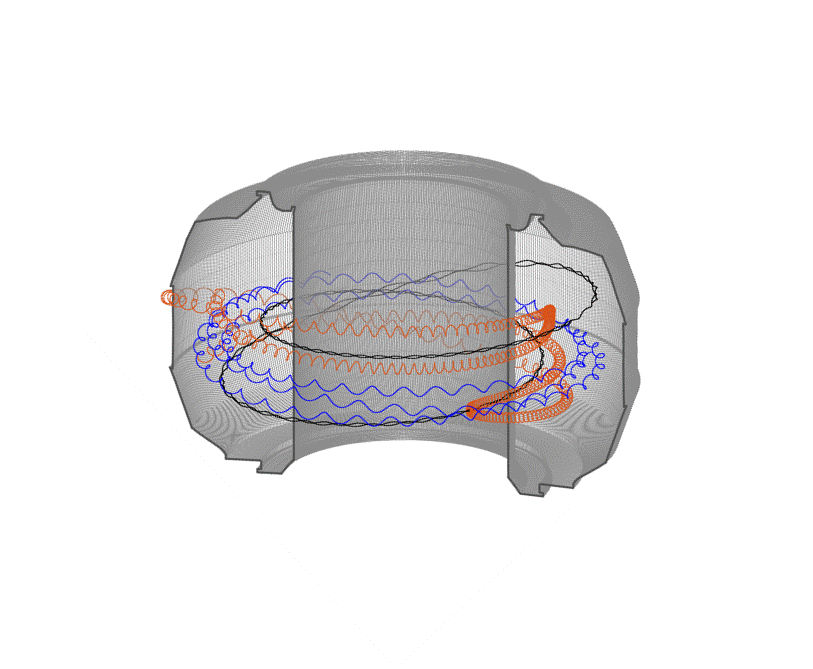
Filter News
Area of Research
- Advanced Manufacturing (3)
- Biology and Environment (5)
- Clean Energy (17)
- Computational Engineering (1)
- Computer Science (3)
- Fuel Cycle Science and Technology (1)
- Fusion and Fission (12)
- Fusion Energy (8)
- Isotope Development and Production (1)
- Isotopes (3)
- Materials (20)
- Materials for Computing (1)
- National Security (4)
- Neutron Science (5)
- Nuclear Science and Technology (19)
- Nuclear Systems Modeling, Simulation and Validation (2)
- Supercomputing (12)
News Type
News Topics
- (-) Advanced Reactors (23)
- (-) Big Data (24)
- (-) Critical Materials (23)
- (-) Molten Salt (7)
- (-) Nuclear Energy (45)
- (-) Space Exploration (13)
- 3-D Printing/Advanced Manufacturing (74)
- Artificial Intelligence (44)
- Bioenergy (39)
- Biology (39)
- Biomedical (28)
- Biotechnology (10)
- Buildings (32)
- Chemical Sciences (38)
- Clean Water (15)
- Climate Change (44)
- Composites (19)
- Computer Science (98)
- Coronavirus (28)
- Cybersecurity (20)
- Decarbonization (28)
- Education (3)
- Element Discovery (1)
- Energy Storage (73)
- Environment (79)
- Exascale Computing (10)
- Fossil Energy (2)
- Frontier (16)
- Fusion (23)
- Grid (36)
- High-Performance Computing (39)
- Hydropower (6)
- Irradiation (2)
- Isotopes (23)
- ITER (5)
- Machine Learning (24)
- Materials (92)
- Materials Science (84)
- Mathematics (2)
- Mercury (5)
- Microelectronics (1)
- Microscopy (27)
- Nanotechnology (38)
- National Security (21)
- Net Zero (5)
- Neutron Science (76)
- Partnerships (29)
- Physics (28)
- Polymers (21)
- Quantum Computing (13)
- Quantum Science (36)
- Renewable Energy (1)
- Security (12)
- Simulation (15)
- Statistics (2)
- Summit (27)
- Sustainable Energy (75)
- Transformational Challenge Reactor (4)
- Transportation (60)
Media Contacts

Gleaning valuable data from social platforms such as Twitter—particularly to map out critical location information during emergencies— has become more effective and efficient thanks to Oak Ridge National Laboratory.

Scientists have tested a novel heat-shielding graphite foam, originally created at Oak Ridge National Laboratory, at Germany’s Wendelstein 7-X stellarator with promising results for use in plasma-facing components of fusion reactors.

Oak Ridge National Laboratory scientists analyzed more than 50 years of data showing puzzlingly inconsistent trends about corrosion of structural alloys in molten salts and found one factor mattered most—salt purity.

By automating the production of neptunium oxide-aluminum pellets, Oak Ridge National Laboratory scientists have eliminated a key bottleneck when producing plutonium-238 used by NASA to fuel deep space exploration.

The Department of Energy’s Oak Ridge National Laboratory is collaborating with industry on six new projects focused on advancing commercial nuclear energy technologies that offer potential improvements to current nuclear reactors and move new reactor designs closer to deployment.

Scientists from Oak Ridge National Laboratory performed a corrosion test in a neutron radiation field to support the continued development of molten salt reactors.

Scientists from the Critical Materials Institute used the Titan supercomputer and Eos computing cluster at ORNL to analyze designer molecules that could increase the yield of rare earth elements found in bastnaesite, an important mineral

The United Kingdom’s National Nuclear Laboratory and the U.S. Department of Energy’s Oak Ridge National Laboratory have agreed to cooperate on a wide range of nuclear energy research and development efforts that leverage both organizations’ unique expertise and capabilities.

Experts focused on the future of nuclear technology will gather at Oak Ridge National Laboratory for the fourth annual Molten Salt Reactor Workshop on October 3–4.

Fusion scientists from Oak Ridge National Laboratory are studying the behavior of high-energy electrons when the plasma that generates nuclear fusion energy suddenly cools during a magnetic disruption. Fusion energy is created when hydrogen isotopes are heated to millions of degrees...


